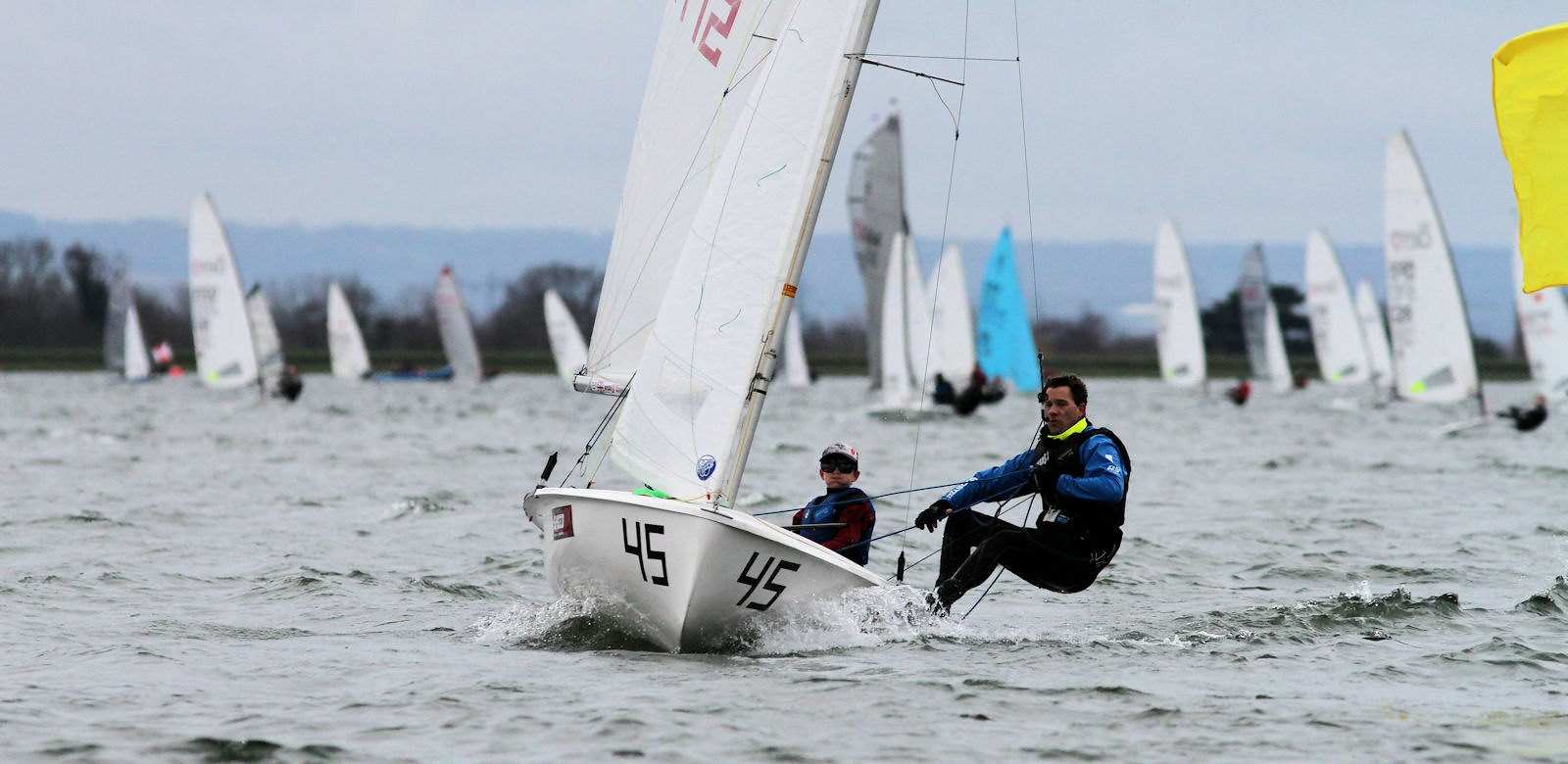Avoiding a Collision
Posted by:Jack Graham-Troll | May 5, 2023
Avoiding a Collision
As the world’s most popular adult and youth racing sailboat, an ILCA start line can get pretty hectic and it’s often difficult to avoid making contact with others. The Kicker/Vang is the main control you want to keep handy, as it has a considerable effect on the manoeuvrability of your boat.
With the kicker on it’s difficult to turn, the boom is lower and catches in the water, keeping the boat powered up. On the start line it’s easy to get ‘stuck in irons’ held head to wind, but with the kicker off the boat is more manoeuvrable. Pulling the kicker on tightens the leach, which holds the power in the sail. Releasing the kicker loosens the leach, releasing the power, making the boat easier to steer.
The Downhaul is another control which helps with the manoeuvrability of your boat. Pulling the downhaul on greatens the effect of the kicker on leach tension and loosens the leach even more. At a start when it’s windy, with the downhaul on and no kicker ensures maximum control when you need it most. It is also important to manage the mainsheet well whilst in the boat. Ensure it doesn’t get knotted, keep it tidy and running freely, as this is the best way to avoid getting in a tangle. Keep your boat well maintained to ensure all your controls are in good condition and work effectively. Confidence is the main thing.
Practice boat handling at every opportunity, especially in confined spaces. Starting manoeuvres, tacks and gybes, scoops, double tacks and reversing out of a situation are all vital manoeuvres to master, so get confident in the boat.

On the start line, get to know how long these manoeuvres take and judge your time, distance and space. Familiarise yourself with the size of your boat and that of others, mixed starts have different fleets with boats varying in size and performance. Consider your competitors and who you are starting next to as it's important to keep your head out of the boat and to have good spacial awareness, so you know who’s around you and you can anticipate where they’re going.
Don’t forget you can communicate with other boats out on the water, speak to them, ask their intentions and what course they are taking. You can then decide your course, anticipate your next move and know where it is safe to go.
Be aware of the wind conditions, try to anticipate the gusts and the wind coming down, don’t get caught out.
Know the rules of sailing, they are free to download here and part 2 is all about ‘when boats meet’. It’s important to know who has the right of way, but it’s rule 14 which states;
AVOIDING CONTACT A boat shall avoid contact with another boat if reasonably possible. However, a right-of-way boat, or one sailing within the room or mark-room to which she is entitled, need not act to avoid contact until it is clear that the other boat is not keeping clear or giving room or mark-room.
If an accident does happen, it’s reassuring to have the support and guidance of GJW Direct, experts in marine insurance with over 195 years of experience.
Personally, I always find the best way to avoid a collision is to get out in front.
Written by:
Jack Graham-Troll
GJW Direct sponsored sailor.
2019 Laser 4.7 National Champion
2019 Laser 4.7 Under 16 National Champion
2020 Laser 4.7 National Ladder Series Champion
2020 Laser 4.7 Under 16 National Champion
2020 RYA ILCA 4 Junior Champion
2021 ILCA 6 Winner of the Welsh Championships
2022 ILCA 6 Under 19 Inland Champion
Topics - Dinghy
10 Top Tips to Protect your Dinghy in the Boat Park this Winter.
May 5, 2023- If you’re resting your boat up for the winter, it’s easy to p...
Topics- Dinghy
Dinghy Racing Tactics: Sam Whaley and Jack Graham-Troll Case Study
Dec 1, 2022
Who are Sam and Jack?
Sam and Jack are both avid dinghy sailor...
Topics- Dinghy

.png)
